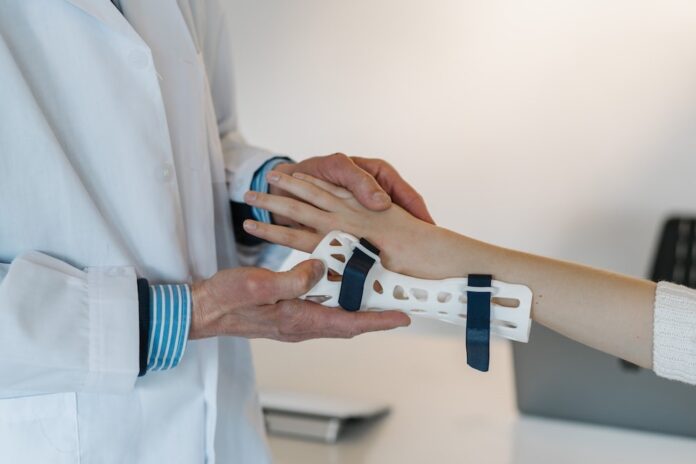When patients with acute or chronic pain feel hopeless, passive, and lacking control over their health, it can worsen symptoms and functioning. However, the concept of self-efficacy offers a powerful way to engage and empower patients as active partners in their own care. Self-efficacy refers to one’s belief in one’s ability to succeed and reach goals. Research shows that higher self-efficacy strongly predicts better outcomes in pain management. Clinicians can employ critical strategies to build patients’ self-confidence and skills for managing pain.
Chiropractor Dr. Michael Vianin offers a fresh perspective on pain management in his book Dispositionalism in Musculoskeletal Care. Dr. Vianin advocates for a patient-centered model of care that empowers individuals and recognizes that “the experts in pain are the patients.” He provides practical tools for clinicians to engage patients as partners rather than passive care recipients. By implementing Dr. Vianin’s insights from Dispositionalism in Musculoskeletal Care, providers can boost self-efficacy and tailor treatment plans relevant to each patient’s unique needs and goals. This approach allows patients to actively manage their pain and improve their functioning.
The Impact of Self-Efficacy
High self-efficacy enhances a patient’s motivation, effort, perseverance, and resilience in facing challenges. Patients with stronger self-efficacy display:
- Better coping, less catastrophizing, and lower anxiety/depression
- Increased adherence to treatment and self-management
- Higher pain tolerance and enhanced functioning
- Improved overall wellbeing and quality of life
Alternatively, low self-efficacy fuels feelings of helplessness, isolation, and lack of control over pain. This often worsens suffering and disability. Assessing and addressing self-efficacy is crucial for successful pain treatment.
Building Self-Efficacy
Clinicians can employ strategies like:
- Collaborative goal-setting – Have patients identify their own treatment goals based on what matters most to their lives and values. Ensure goals are specific, measurable, achievable, and timely.
- Progress tracking – Use pain diaries, rating scales (0-10), or questionnaires to give patients concrete feedback on improving symptoms, function, or quality of life.
- Motivational interviewing – Ask open-ended questions and make affirming statements to strengthen the patient’s internal motivation and confidence. Avoid lecturing.
- Success planning – Break down larger goals into incremental steps the patient knows they can accomplish, building towards larger successes. Troubleshoot potential barriers.
- Skills training – Teach cognitive, physical, and relaxation skills for managing pain episodes rather than relying solely on medications or passive treatments.
- Peer support – Connect patients with support groups, mentoring programs, or online communities to reduce isolation and learn from others’ experiences.
- Positive reinforcement – Recognize effort and progress, however small. Avoid focusing only on problems.
- Addressing catastrophizing – Help patients replace exaggerated negative thoughts with more realistic perspectives on their ability to manage and function despite pain.
- Shared decision-making – Collaborate as partners instead of “doctor knows best.” Make patients active participants in setting the treatment agenda.
- Open communication – Ask questions, listen reflectively, validate patients’ experiences, and welcome their input. Foster empowerment.
Improving Outpatient Pain Programs
Outpatient pain programs represent an excellent opportunity to employ a coordinated, interdisciplinary approach to building self-efficacy.
Key principles include:
- Tailoring treatment based on individual needs and goals
- Promoting an internal locus of control and responsibility
- Setting progressive goals collaboratively
- Consistent reinforcement of progress and positive behaviors
- Ongoing skills training and education on managing pain
- Group support from other patients
- Addressing psychological barriers like catastrophic thinking
- Active self-care vs. passive modalities
- Follow-up to prevent regressing and maintain gains
Programs grounded in boosting self-efficacy produce better engagement, functioning, and long-term outcomes.
Conclusion
Beliefs of self-efficacy significantly influence pain adaptation, functioning, and treatment success. Clinicians who shift from a paternalistic approach to empowering patients as partners fully engaged in their own care, as Dr. Vianin advocates in Dispositionalism in Musculoskeletal Care, can enhance self-confidence. This collaborative process requires ongoing communication, reinforcement, and skills training. However, the rewards of fostering self-efficacy include reduced disability, improved quality of life, and lasting positive outcomes for patients with pain.
